
0 Followers
532 Views
springerw7DAk
0 Followers
532 Views
Share
Share
52
Posts
A review of methods for scaling remotely sensed data for spatial pattern analysis - Landscape Ecology
Context Landscape ecologists have long realized the importance of
scale when studying spatial patterns and the need for a science of
scaling. Remotely sensed data, a key component of a landscape
ecologist’s toolbox used to study spatial patterns, often requires
scaling to meet study requirements. Objectives This paper reviews
methods for scaling remote sensing-based data, with a specific
focus on spatial pattern analysis, and distills the numerous
approaches based on data type. It also discusses knowledge... more Context Landscape ecologists have long realized the importance of scale when studying spatial patterns and the need for a science of scaling. Remotely sensed data, a key component of a landscape ecologist’s toolbox used to study spatial patterns, often requires scaling to meet study requirements. Objectives This paper reviews methods for scaling remote sensing-based data, with a specific focus on spatial pattern analysis, and distills the numerous approaches based on data type. It also discusses knowledge gaps and future directions. Methods Key papers were identified through a systematic review of the literature. Trends, developments, and key methods for scaling remotely sensed data and spatial products derived from these data were identified and synthesized to detail the general progression of a science of scaling in landscape ecology. Results Upscaling both continuous and categorical data can oversimplify data, creating challenges for spatial pattern analysis. Object-based and neighborhood approaches can help, and since patch boundaries are more likely to align with objects than pixels, these may be better options for landscape ecologists. Many downscaling methods exist, but these approaches are not being widely employed for spatial pattern analysis. Conclusions A diverse range of scaling methods are available to landscape ecologists, but work remains to integrate them into spatial pattern analysis. Moving forward, advances in computer science and engineering should be explored and cross-disciplinary research encouraged to further the science of scaling remotely sensed data. less
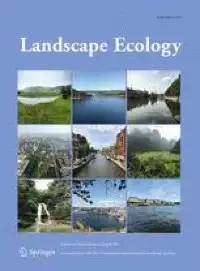
You can contact us to get more choices
Landscape-based solutions are needed for meeting water challenges of China’s expanding and thirsty cities - Landscape Ecology
Authors (first, second and last of 4)
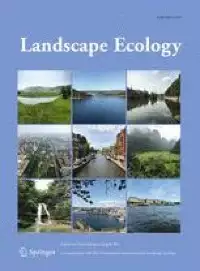
You can contact us to get more choices
Defensible-space treatment of < 114,000 ha 40 m from high-risk buildings near wildland vegetation could reduce loss in WUI wildfire disasters across Colorado’s 27 million ha - Landscape Ecology
Context WUI wildfire disasters are increasing, as fires are pushed
by strong winds and drier fuels across landscapes and into
communities. Possible disasters make maintaining and restoring
landscape-scale fire in fire-adapted ecosystems difficult. Rapid
action is needed to reduce building loss in WUI wildfire disasters.
Objectives In a Colorado study, I used distance-based empirical
modeling to refine potential risk of building loss in WUI wildfire
disasters to focus risk-reduction efforts. Methods New empirical... more Context WUI wildfire disasters are increasing, as fires are pushed by strong winds and drier fuels across landscapes and into communities. Possible disasters make maintaining and restoring landscape-scale fire in fire-adapted ecosystems difficult. Rapid action is needed to reduce building loss in WUI wildfire disasters. Objectives In a Colorado study, I used distance-based empirical modeling to refine potential risk of building loss in WUI wildfire disasters to focus risk-reduction efforts. Methods New empirical modeling showed 95% of USA building loss in WUI wildfire disasters was within 100 m of wildland vegetation. I used modeling to estimate and map potential relative risk of a WUI wildfire disaster for each of 2,185,953 buildings in Colorado. Results High-risk buildings were 241,375 or 11% of total buildings. However, the 20–40 m essential defensible space around these buildings covered only 46,767–114,084 ha. Area within 100 m of wildland vegetation, containing these buildings, covered 475,840 ha or 1.8% of Colorado’s 27 million ha. About 95% of at-risk land within 100 m of wildland vegetation is not federally owned, and WUI wildfire disasters are mostly from fires started on private land. Conclusions Treating ≤ 114,084 ha of defensible space could leave the 27 million ha of Colorado with lower WUI wildfire disaster-risk to buildings. High risk of building loss is rarely a federal land-management problem. If the goal is rapid reduction of building loss in WUI wildfire disasters, focus resources on defensible space 20–40 m from WUI buildings within 100 m of wildland vegetation. less
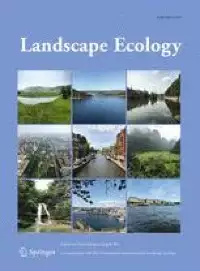
You can contact us to get more choices
Prolonged coastal inundation detected with synthetic aperture radar significantly retarded functional recovery of mangroves after major hurricanes - Landscape Ecology
Context Hurricanes are major threats to coastal mangrove
ecosystems. Inundation has been implicitly reported to associate
with mangrove damages and mortality. However, there have been no
spatial statistical analyses of the impact of inundation on
mangrove recovery at landscape scales. Objectives Our objectives
are to detect spatiotemporal patterns of inundation after major
hurricanes and to explore explicitly the role of inundation in
mangrove recovery at landscape scale. Methods Using C-band
Synthetic Aperture... more Context Hurricanes are major threats to coastal mangrove ecosystems. Inundation has been implicitly reported to associate with mangrove damages and mortality. However, there have been no spatial statistical analyses of the impact of inundation on mangrove recovery at landscape scales. Objectives Our objectives are to detect spatiotemporal patterns of inundation after major hurricanes and to explore explicitly the role of inundation in mangrove recovery at landscape scale. Methods Using C-band Synthetic Aperture Radar images, we detected the spatiotemporal pattern of surface flood and derived the spatial distribution of inundation depth under mangrove canopies based on surrounding surface flood and elevation along northern Puerto Rico coasts after major hurricanes in 2017. Based on the Enhanced Vegetation Index, we derived the short-term hurricane impact and the recovery ratio from 2018 to 2021, and analyzed the impact and the recovery of mangrove greenness by means of spatial error models. Results The identification of surface flood reached very high accuracy. The severe impact is significantly explained by greater gust windspeed during the hurricane and lower elevation. More importantly, retarded mangrove greenness recovery is significantly explained by severer impacts, longer and deeper inundation, and heavier hurricane rainfall. Conclusions Spatiotemporal heterogeneity in flood depth plays a significant and essential role in mangrove recovery and delayed mortality after major hurricanes. The derived flood depth turns out to be a better explanator of mangrove recovery than elevation, which highlights importance of landscape hydrology and topography with respect to mangrove response and restoration after major hurricanes. less
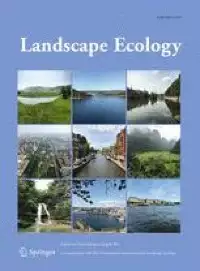
You can contact us to get more choices
The impact of habitat fragmentation on domatia-dwelling mites and a mite-plant-fungus tritrophic interaction - Landscape Ecology
Context Habitat fragmentation is a leading threat to biodiversity,
yet the impacts of fragmentation on most taxa, let alone
interactions among those taxa, remain largely unknown. Objectives
We studied how three consequences of fragmentation—reduced patch
connectivity, altered patch shape, and edge proximity—impact
plant-dwelling mite communities and mite-plant-fungus interactions
within a large-scale habitat fragmentation experiment. Methods We
sampled mite communities from the leaves of Quercus nigra (a... more Context Habitat fragmentation is a leading threat to biodiversity, yet the impacts of fragmentation on most taxa, let alone interactions among those taxa, remain largely unknown. Objectives We studied how three consequences of fragmentation—reduced patch connectivity, altered patch shape, and edge proximity—impact plant-dwelling mite communities and mite-plant-fungus interactions within a large-scale habitat fragmentation experiment. Methods We sampled mite communities from the leaves of Quercus nigra (a plant species that has foliar domatia which harbor fungivorous and predacious mites) near and far from edge within fragments of varying edge-to-area ratio (shape) and connectivity via corridors. We also performed a mite-exclusion experiment across these fragmentation treatments to test the effects of mite presence and fungal hyphal abundance on leaf surfaces. Results Habitat edges influenced the abundance and richness of leaf-dwelling mites; plants closer to the edge had higher mite abundance and species richness. Likewise, hyphal counts were higher on leaves near patch edges. Despite both mite and fungal abundance being higher at patch edges, leaf hyphal counts were not impacted by mite abundance on those leaves. Neither patch shape nor connectivity influenced mite abundance, mite species richness, or the influence of mites on leaf surface fungal abundance. Conclusion Our results suggest that mites and foliar fungi may be independently affected by edge-structured environmental gradients, like temperature, rather than trophic effects. We demonstrate that large-scale habitat fragmentation and particularly edge effects can have impacts on multiple levels of microscopic communities, even in the absence of cascading trophic effects. less
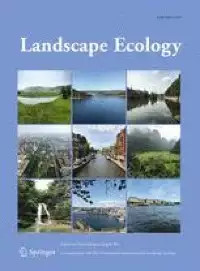
You can contact us to get more choices
Potential cougar habitats and dispersal corridors in Eastern North America - Landscape Ecology
Context Cougars (Puma concolor) have been recolonizing Midwestern
North America during the past 3 decades with > 950 cougar
confirmations east of established populations. Due to an increase
in confirmations east of current breeding populations, evaluation
of cougar habitat suitability and connectivity is needed. However,
few studies have assessed the habitat potential for cougar
recolonization in the eastern portion of their former range.
Objectives We used various habitat quality thresholds to model
potential... more Context Cougars (Puma concolor) have been recolonizing Midwestern North America during the past 3 decades with > 950 cougar confirmations east of established populations. Due to an increase in confirmations east of current breeding populations, evaluation of cougar habitat suitability and connectivity is needed. However, few studies have assessed the habitat potential for cougar recolonization in the eastern portion of their former range. Objectives We used various habitat quality thresholds to model potential cougar habitats and dispersal corridors throughout eastern North America. Methods Based on expert opinion, we used landcover, slope, human density, distance to roads, and distance to water as model variables. Least-cost path methods were used to model dispersal corridors from western populations to potential eastern habitat patches. Results Patches of suitable habitat ranged in size from 3868 km2 (Ozark Mountains) to > 2,490,850 km2 (central and eastern Canada). Potential habitats were predominantly forest and shrubland, contained little anthropogenic development, and had high stream densities. Dispersal corridors were present throughout the study area. Corridors largely consisted of forested and cultivated landscapes and had higher road densities than habitat patches. Conclusions Our research provides conservationists with insights into areas suitable for cougar recolonization so they may proactively plan for potential cougar populations east of their current range. This work also provides a framework for evaluating multiple levels of landscape suitability for recolonizing species. less
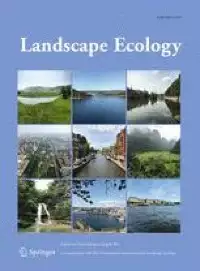
You can contact us to get more choices
Interpolating resident attitudes toward exurban roadside forest management - Landscape Ecology
Context Knowledge about spatial patterns of human dimensions data
within landscape ecology is nascent despite its importance in
natural resources management. We explored this topic within the
context of utility roadside forest management, a complex situation
involving ecological, cultural, and aesthetic aspects of forests
and reliable power. Objectives We applied spatial interpolation to
investigate patterns of human attitudes toward roadside vegetation
management data across an exurban landscape. Methods Mail... more Context Knowledge about spatial patterns of human dimensions data within landscape ecology is nascent despite its importance in natural resources management. We explored this topic within the context of utility roadside forest management, a complex situation involving ecological, cultural, and aesthetic aspects of forests and reliable power. Objectives We applied spatial interpolation to investigate patterns of human attitudes toward roadside vegetation management data across an exurban landscape. Methods Mail surveys (n = 1962) were used to collect social science data from residents in four areas of Connecticut, USA. For each area, three attitudes variables were evaluated for spatial autocorrelation using Moran’s I statistic. Based on identified autocorrelation distance or scale, attitudes were interpolated using inverse distance weighting. Model validation of interpolated surfaces was completed using root mean square error. Results Significant spatial autocorrelation was present for five of 12 study area-attitude pairings (one focused on professionalism; two focused on safety; three focused on tradeoffs between reliable power and maintaining trees) at distances ranging from 200 to 2400 m. Accuracy of interpolations varied among study areas, suggesting that the choice of spatial scale of analysis influenced model results. Conclusions Social processes influencing attitudes were spatially heterogeneous, existing at disparate scales for the same variables in different locations. Collectively, “enough” roadside forest may exist to ameliorate intermittent vegetation management aesthetically, yet underlying social processes influencing roadside forest outcomes likely are not mutually exclusive. Interpolation assumptions often applied toward ecological studies did not work well for social processes studied in this analysis. less
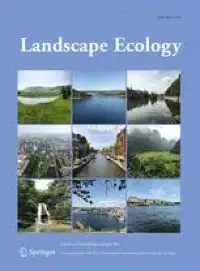
You can contact us to get more choices
Linking tree cover change to historical management practices in urban parks - Landscape Ecology
Context Urban tree canopy (UTC) in parks is shaped by complex
interactions between social and ecological processes over decades.
To understand UTC change in parks, it is critical to identify and
characterize the unique set of social processes that drive
long-term change. Objectives We sought to uncover the feedbacks
between social processes and long-term UTC changes in parks of a
post-industrial city that experienced substantial population loss
and park disinvestment. Methods Our mixed-methods approach involved... more Context Urban tree canopy (UTC) in parks is shaped by complex interactions between social and ecological processes over decades. To understand UTC change in parks, it is critical to identify and characterize the unique set of social processes that drive long-term change. Objectives We sought to uncover the feedbacks between social processes and long-term UTC changes in parks of a post-industrial city that experienced substantial population loss and park disinvestment. Methods Our mixed-methods approach involved quantifying spatiotemporal UTC changes and connecting those changes to historical management practices for three parks in Philadelphia, PA (US). We delineated UTC using aerial imagery between 1959 and 2018, and synthesized information from archival records and semi-structured interviews about historical management practices. Results We found substantial UTC gains between 1959 and 1980, due to both: (a) budget cuts, mowing cessation, and associated unintended forest emergence; and (b) purposeful tree planting and reforestation activities. While some UTC gains were purposeful, others were unintentional and reflect successional processes on unmaintained lands. Contrary to literature suggesting that financial investment would lead to UTC gain, we saw declining UTC following an influx of new funding post-2000 due to construction and ecological restoration. Conclusions We found differing pathways leading to convergent outcomes of UTC gains. Across the three parks, differing historical processes and management goals for park landscapes had important ramifications for UTC. Our work suggests that landscape management could benefit from an improved understanding of how historical processes impact land cover over the long-term. less
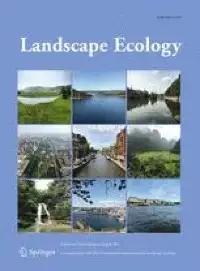
You can contact us to get more choices
UAVs improve detection of seasonal growth responses during post-fire shrubland recovery - Landscape Ecology
(1) We monitored post-fire shrubland recovery responses to changes
in rainfall seasonality using a multi-year field experiment in the
Cape Floristic Region (CFR) of South Africa. A primary objective
was to test the utility of UAVs for monitoring ultra-fine-scale
vegetation changes in the early post-fire context. (2) By
comparison with detailed ground-based measurements, we showed that
UAVs improved detection of integrated community growth responses,
given that the appropriate relative radiometric normalisation... more (1) We monitored post-fire shrubland recovery responses to changes in rainfall seasonality using a multi-year field experiment in the Cape Floristic Region (CFR) of South Africa. A primary objective was to test the utility of UAVs for monitoring ultra-fine-scale vegetation changes in the early post-fire context. (2) By comparison with detailed ground-based measurements, we showed that UAVs improved detection of integrated community growth responses, given that the appropriate relative radiometric normalisation techniques were applied to repeated imagery data. UAVs supported ground-based findings and, moreover, helped to identify previously undetected growth form responses. However, due to the limitations in detecting species-specific demographic changes, UAVs could not completely replace ground-based measurements. (3) Our combined UAV-based and ground-based monitoring approaches indicated strong coupling between post-fire shrubland recovery and seasonal rainfall patterns in the CFR but also demonstrated that sensitivity to rainfall seasonality could differ between neighbouring shrubland communities occurring on different soil types. (4) The careful integration of UAV-based and ground-based monitoring approaches provided the fullest understanding of early post-fire shrubland recovery patterns. less
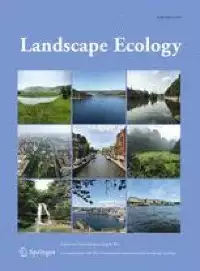
You can contact us to get more choices
Spatial patterns of woody plant encroachment in a temperate grassland - Landscape Ecology
Context Woody encroachment is the process whereby grasslands
transition to a woody-dominated state. This process is a global
driver of grassland decline and is ultimately the outcome of
increased woody plant recruitment in grasslands. Yet, little is
known about how recruitment distances structure spatial patterns of
encroachment. Objectives Here, we develop a recruitment curve to
describe the scatter of woody plant recruitment around seed sources
and examine how this structures spatial patterns of encroachment.... more Context Woody encroachment is the process whereby grasslands transition to a woody-dominated state. This process is a global driver of grassland decline and is ultimately the outcome of increased woody plant recruitment in grasslands. Yet, little is known about how recruitment distances structure spatial patterns of encroachment. Objectives Here, we develop a recruitment curve to describe the scatter of woody plant recruitment around seed sources and examine how this structures spatial patterns of encroachment. Methods We developed a recruitment curve for Juniperus virginiana using an encroachment dataset that captures spread from tree plantings into treeless grassland sites in the Nebraska Sandhills (USA). In addition, we used height classes of encroaching J. virginiana as subsequent time steps of an encroachment process to examine how the leading edge of encroachment expanded over time. Results The recruitment curve was characterized by a fat-tailed distribution. Most recruitment occurred locally, within 157 m of seed sources (95th percentile distance), while, sparse long-distance recruitment characterized the curve’s tail. Expansion of the leading edge of encroachment was characterized by two features: (1) a slow moving, high density area near tree plantings and (2) rapid expansion of the distribution’s tail, driven by long-distance recruitment in treeless areas. Conclusion Our results show a high capacity for woody plant invasion of grasslands. Local recruitment drives transitions to woody dominance, while long-distance recruitment generates a rapidly advancing leading edge. Plans to conserve and restore grasslands will require spatially informed strategies that account for local and long-distance recruitment of woody plants. less
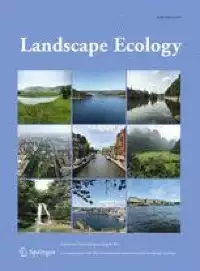
You can contact us to get more choices
Conflict of energies: spatially modeling mule deer caloric expenditure in response to oil and gas development - Landscape Ecology
Context Wildlife avoid human disturbances, including roads and
development. Avoidance and displacement of wildlife into less
suitable habitat due to human development can affect their energy
expenditures and fitness. The heart rate and oxygen uptake of large
mammals varies with both natural aspects of their habitat (terrain,
climate, predators, etc.) and anthropogenic influence (noise,
light, fragmentation, etc.). Although incorporating physiological
analyses of energetics can inform the impacts of both development... more Context Wildlife avoid human disturbances, including roads and development. Avoidance and displacement of wildlife into less suitable habitat due to human development can affect their energy expenditures and fitness. The heart rate and oxygen uptake of large mammals varies with both natural aspects of their habitat (terrain, climate, predators, etc.) and anthropogenic influence (noise, light, fragmentation, etc.). Although incorporating physiological analyses of energetics can inform the impacts of both development and conservation, management decisions rarely incorporate individuals’ energetic requirements when deciding on locations for potential development. Objectives We aimed to estimate the change in expected energy expenditure, numerically and spatially, for mule deer to traverse a landscape with varying levels of oil and gas development through time. Methods Using calculations of energy expenditure of mule deer (Odocoileus hemionus) by weight, in relation to physical terrain components, plus avoidance factors for anthropogenic disturbance, we developed a spatiotemporal model of the minimum energy required for mule deer to traverse a landscape. We compared expected energy expenditure across 12 study sites with increasing levels of oil and gas development and over time in our study area, on the northern Colorado Plateau of Utah. Results We found that energy expenditure can be increased by development, regardless of terrain, through increased travel distance associated with avoidance behavior. Maximum median energy expenditure to traverse a 1400 ha sample area rose from 1135 to 1935 kilocalories, a 70% increase in energy required of a mule deer. There was a significant relationship between energy expenditure and the size of oil and gas development (p < 0.001), its compactness (p < 0.05), and its ‘thinness’ (p < 0.001), but not terrain ruggedness (p = 0.25). Conclusion As the energy costs of movement correlate across multiple species of large mammals, our analysis of the energetic cost, for mule deer, associated with development can serve as a quantitative representative of the impacts of oil and gas development for multiple mammals—including threatened or endangered species. Our bioenergetic cost-distance model provides a means of delineating impediments to efficient movement and can be used to quantify the expected energetic costs of proposed future developments. As wildlife are exposed to increasing anthropogenic stressors which reduce fitness, it is important to make strategic siting decisions to reduce energetic costs imposed by human activities. less
You can contact us to get more choices
Neighbourhood threats: landscape context and anthropogenic changes can trigger waterbird population collapse - Landscape Ecology
Context Global biodiversity decreases rapidly, driven by various
factors ranging from climate change to anthropogenic activities.
Identifying driving forces of population decline is critical for
biological conservation. Time-series data are especially valuable
for this goal, but unfortunately, high-quality time-series data are
generally lacking, hampering evidences-based conservation policy
making. Objectives In this study, we examined how population growth
rates of wintering waterbird species changed across... more Context Global biodiversity decreases rapidly, driven by various factors ranging from climate change to anthropogenic activities. Identifying driving forces of population decline is critical for biological conservation. Time-series data are especially valuable for this goal, but unfortunately, high-quality time-series data are generally lacking, hampering evidences-based conservation policy making. Objectives In this study, we examined how population growth rates of wintering waterbird species changed across 34 years (1986–2019) in response to changes in landscape context, climatic, ecological and anthropogenic factors in the Yangtze River Floodplain. Specifically: we aimed to (1) understand the factors that are correlated with the population trend of each waterbird species, and (2) identify the spatial scale at which each waterbird species responds to surrounding landscape changes. Methods We systemically collected wintering survey data from 1986 to 2019 in Shengjin Lake National Nature Reserve for six waterbird species including Oriental stork (Ciconia boyciana), Eurasian spoonbill (Platalea leucorodia), Tundra swan (Cygnus columbianus), Swan goose (Anser cygnoid), Hooded crane (Grus monacha) and White-naped crane (Grus vipio), coupled with climatic and anthropogenic data. Satellite images were analyzed to characterize ecological variables and landscape context (both in landscape and class levels). Results Our results suggested that anthropogenic landscape changes surrounding wetland habitats (i.e., landscape context) acted as the primary factors driving the waterbird population changes and were responsible for the observed population declines. In particular, increasing built-up areas and decreasing cropland areas associated with urbanization and human settlement expansion largely explained the declining population size. Our results also showed that different variables operated at a different scale of the landscape context, highlighting the importance of the surrounding landscape configuration at both small and larger scales, as built-up area was most important at around 8 km for most of the studied species, but cropland area expansion benefitted the two crane species at a larger spatial extent. The fishing ban policy implemented in 2017 provides an opportunity for reversing such declines, as positive effects of reduced human activities were observed in a portion of waterbird species. Conclusions The demonstrated strong effects of landscape context on wetland biodiversity illustrated that practical mitigating measures can increase conservation success if they not only target the wetland habitats per se but also include the surrounding non-wetland areas at larger spatial scales. less
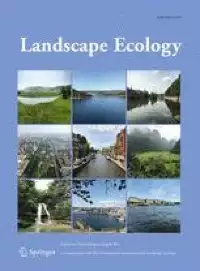
You can contact us to get more choices
Aiming for the optimum: examining complex relationships among sampling regime, sampling density and landscape complexity to accurately model resource availability - Landscape Ecology
Context Obtaining accurate and precise maps of landscape features
often requires intensive spatial sampling and interpolation. The
data required to generate reliable interpolated maps varies with
sampling density and landscape heterogeneity. However, there has
been no rigorous examination of sampling density relative to
landscape characteristics and interpolation methods. Objectives Our
objective was to characterize the 3-way relationship among sampling
density, interpolation method, and landscape heterogeneity... more Context Obtaining accurate and precise maps of landscape features often requires intensive spatial sampling and interpolation. The data required to generate reliable interpolated maps varies with sampling density and landscape heterogeneity. However, there has been no rigorous examination of sampling density relative to landscape characteristics and interpolation methods. Objectives Our objective was to characterize the 3-way relationship among sampling density, interpolation method, and landscape heterogeneity on interpolation accuracy and precision in simulated and in situ landscapes. Methods We simulated landscapes of variable heterogeneity and sampled at increasing densities using gridded and random strategies. We applied three local interpolation methods (i.e., Inverse Distance Weighting, Universal Kriging, and Nearest Neighbor) to the sampled data and estimated accuracy (slope and intercept) and precision (R2) between interpolated surfaces and the original surface. Finally, we applied these analyses to in situ data using a normalized difference vegetation index raster collected from pasture with various resolutions. Results In our simulations, all interpolation methods and sampling strategies yielded similar accuracy and precision except in the case of Universal Kriging with random sampling. Additionally, low heterogeneity and increasing sample density improved both accuracy and precision, with cross-validation slopes and R2 values approaching optimal values. In situ analysis demonstrated that heterogeneity decreased with resolution. Nearest Neighbor under both sampling strategies and Universal Kriging using the gridded sampling strategy had the highest accuracy and precision. Decreased heterogeneity and increased sampling density improved accuracy and precision for all combinations of interpolation method and sampling strategies. Conclusions Heterogeneity of the landscape is a major influence on the accuracy and precision of interpolated maps. There is a need to create structured tools to aid in determining sampling design most appropriate for interpolation methods across landscapes of various heterogeneity. less
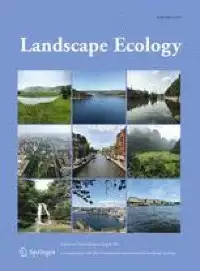
You can contact us to get more choices
Integrating land use and climate change models with stakeholder priorities to evaluate habitat connectivity change: a case study in southern Québec - Landscape Ecology
Context An important output of connectivity science is the
identification of priority areas for the conservation of landscape
connectivity. However, current connectivity conservation planning
methods rarely take into account risks associated with future land
use and climate change, and seldom incorporate stakeholder
perceptions of connectivity priorities. Objectives We modeled
future connectivity change for five umbrella vertebrate species in
a fragmented landscape, the Montérégie region in Québec, Canada.... more Context An important output of connectivity science is the identification of priority areas for the conservation of landscape connectivity. However, current connectivity conservation planning methods rarely take into account risks associated with future land use and climate change, and seldom incorporate stakeholder perceptions of connectivity priorities. Objectives We modeled future connectivity change for five umbrella vertebrate species in a fragmented landscape, the Montérégie region in Québec, Canada. We aimed to show how connectivity, land use change, and climate change models can be integrated with stakeholder information to derive simple connectivity assessments and conservation scenarios. Methods We projected change in ecological connectivity along with land use and climate change, for five vertebrate species whose needs are representative of the habitat and movement needs of many other vertebrates in our study region. We organized a participatory workshop with local stakeholders, utilizing methods of consensus building to identify priority areas for connectivity. We used the results to generate simple connectivity conservation scenarios. Results Land use change strongly impacted connectivity negatively for all species. The effects were worsened by climate change the more our species relied on climate-sensitive forest habitats, suggesting that interactions between climate and land use change can matter even at sub-regional scales. Integrating stakeholders’ priorities into connectivity modeling allowed for the definition of useful scenarios. Conclusions Our results highlight the relevance of an iterative, multi-stakeholder approach to the definition of scenarios for connectivity conservation priorities. Integrated models can support the scenario-making process for fragmented landscapes, where deriving realistic and relevant alternative scenarios is challenging. less
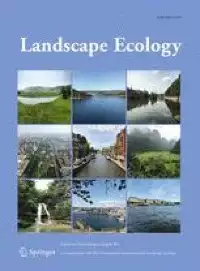
You can contact us to get more choices
Quantifying cross-scale patch contributions to spatial connectivity - Landscape Ecology
Context Connectivity between habitat patches is vital for
ecological processes at multiple scales. Traditional metrics do not
measure the scales at which individual habitat patches contribute
to the overall ecological connectivity of the landscape.
Connectivity has previously been evaluated at several different
scales based on the dispersal capabilities of particular organisms,
but these approaches are data-heavy and conditioned on just a few
species. Objectives Our objective was to improve cross-scale
measurement... more Context Connectivity between habitat patches is vital for ecological processes at multiple scales. Traditional metrics do not measure the scales at which individual habitat patches contribute to the overall ecological connectivity of the landscape. Connectivity has previously been evaluated at several different scales based on the dispersal capabilities of particular organisms, but these approaches are data-heavy and conditioned on just a few species. Objectives Our objective was to improve cross-scale measurement of connectivity by developing and testing a new landscape metric, cross-scale centrality. Methods Cross-scale centrality (CSC) integrates over measurements of patch centrality at different scales (hypothetical dispersal distances) to quantify the cross-scale contribution of each individual habitat patch to overall landscape or seascape connectivity. We tested CSC against an independent metapopulation simulation model and demonstrated its potential application in conservation planning by comparison to an alternative approach that used individual dispersal data. Results CSC correlated significantly with total patch occupancy across the entire landscape in our metapopulation simulation, while being much faster and easier to calculate. Standard conservation planning software (Marxan) using dispersal data was weaker than CSC at capturing locations with high cross-scale connectivity. Conclusions Metrics that measure pattern across multiple scales are much faster and more efficient than full simulation models and more rigorous and interpretable than ad hoc incorporation of connectivity into conservation plans. In reality, connectivity matters for many different organisms across many different scales. Metrics like CSC that quantify landscape pattern across multiple different scales can make a valuable contribution to multi-scale landscape measurement, planning, and management. less
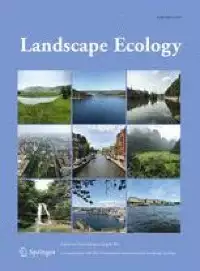
You can contact us to get more choices
An overview of computational tools for preparing, constructing and using resistance surfaces in connectivity research - Landscape Ecology
Context Connectivity between habitat patches is a recognized
conservation action to conserve biodiversity in a rapidly changing
world. Resistance surfaces, a spatial representation of cost of
movement across the landscape, are often the foundation for
connectivity analyses but working with them can be daunting due to
the diversity and complexity of software tools. Objectives We
present an overview of the steps involved when working with
resistance surfaces, identify tools that perform specific tasks,
evaluate... more Context Connectivity between habitat patches is a recognized conservation action to conserve biodiversity in a rapidly changing world. Resistance surfaces, a spatial representation of cost of movement across the landscape, are often the foundation for connectivity analyses but working with them can be daunting due to the diversity and complexity of software tools. Objectives We present an overview of the steps involved when working with resistance surfaces, identify tools that perform specific tasks, evaluate user experience with the tools, identify needs of the user community, and present some recommendations for users and developers. Methods We identified tools applicable at each of the three steps (i) preparing data, (ii) constructing and optimizing surfaces, and (iii) using resistance surfaces. We conducted an online survey of the connectivity user community to assess the popularity and experience with tools on five criteria and identified characteristics important in the selection of connectivity tools. Results We reviewed a total of 43 tools, of which 10 are useful for data preparation, 27 allow construction, and 30 tools that use resistance surfaces. A total of 148 survey participants working in 40 countries were familiar with 37 tools. Tools are ranked heterogeneously for the five criteria. Crucial avenues for future development of connectivity tools identified by respondents are incorporation of uncertainties, dynamic connectivity modelling, and automated parameter optimization. Conclusions Since resistance surfaces are used for a variety of applications, it is important that users are aware about the appropriate tools. We anticipate that future tools for connectivity research will incorporate more complex and biologically more realistic analytical approaches. less
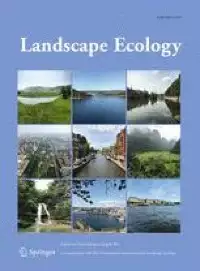
You can contact us to get more choices
Stay home, stay safe? High habitat suitability and environmental connectivity increases road mortality in a colonizing mesocarnivore - Landscape Ecology
Context Anthropogenic structures have considerable effects on
ecosystems, disrupting natural population processes and
representing a serious risk in terms of vehicle collisions. The
golden jackal (Canis aureus) is a mesocarnivore species whose range
is expanding in Europe. Roadkills are one of the main human-induced
mortalities in Italy to the species. Objectives Identify
road-related characteristics and ecological factors related to
golden jackal roadkill risk in Italy. Methods We used habitat
suitability (Maxent)... more Context Anthropogenic structures have considerable effects on ecosystems, disrupting natural population processes and representing a serious risk in terms of vehicle collisions. The golden jackal (Canis aureus) is a mesocarnivore species whose range is expanding in Europe. Roadkills are one of the main human-induced mortalities in Italy to the species. Objectives Identify road-related characteristics and ecological factors related to golden jackal roadkill risk in Italy. Methods We used habitat suitability (Maxent) and connectivity (Circuit theory) models to derive 15 metrics potentially affecting roadkill risk. We tested their influence using Bayesian generalized linear models and generalized linear models comparing golden jackal roadkill locations to random locations. Furthermore, we tested if there were significant sex, age-related and seasonal differences among road-killed individuals. Results We found that roadkill risk was higher in areas characterized by higher values of habitat suitability and connectivity, habitat fragmentation and along highways. It was lower with increasing distance to the source population and in the presence of guardrails. No significant differences were detected in terms of roadkill risk between sexes, age classes and season Conclusions The identified factors affecting road mortality of golden jackals in Italy provide insights on how to mitigate wildlife-vehicle collisions. Crossing areas, and visual and acoustic warnings for wildlife, as well as the importance of managing fences along high traffic volume roads could help mitigate further damage. Finally, there is a need to further investigate the effectiveness of mitigation measures in the light of the golden jackal’s ongoing expansion in a human-modified landscape. less
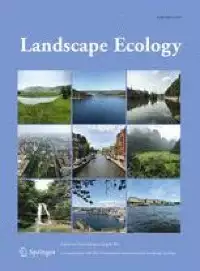
You can contact us to get more choices
Combining landscape and genetic graphs to address key issues in landscape genetics - Landscape Ecology
Context All the components of landscape and genetic structures can
be associated with the nodes and links of landscape graphs and
genetic graphs. Yet, these graphs have long been used separately
despite the potential for their combined use in landscape genetics.
Objectives First, comparing these graphs could be an effective way
to disentangle the influence of intra-patch features from that of
inter-patch connectivity on genetic structure or to assess whether
intra-population genetic diversity and inter-population... more Context All the components of landscape and genetic structures can be associated with the nodes and links of landscape graphs and genetic graphs. Yet, these graphs have long been used separately despite the potential for their combined use in landscape genetics. Objectives First, comparing these graphs could be an effective way to disentangle the influence of intra-patch features from that of inter-patch connectivity on genetic structure or to assess whether intra-population genetic diversity and inter-population genetic differentiation are sensitive to the same landscape influences. Methods Moreover, because graph pruning determines which connections between nodes are considered in calculating neighbourhood-based metrics or graph-based distances, comparing the metrics or distances derived from differently pruned graphs can be an effective way to identify the scale of landscape effects or the scale at which both gene flow and drift determine genetic differentiation. Similarly, comparing node partitions in both types of graphs could strengthen the validity of barrier identifications. Results Second, beyond mere comparisons, integration of landscape and genetic graphs through gravity models can further enhance their joint use for theoretical and applied objectives alike. Conclusion We thus believe that future research could illustrate and enhance the relevance of these methods for a wider range of applications in landscape genetics. less
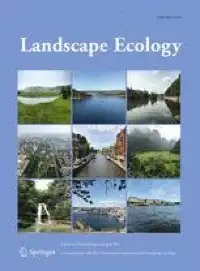
You can contact us to get more choices
Ecosystem services trade-offs in landscapes: trends, areas of greatest impact, and temporal evolution of the scientific field - Landscape Ecology
Context Trade-offs between ecosystem services (ES) occur by
premeditated decision or as an involuntary consequence of landscape
change. This has been highlighted as a challenge to human
well-being and landscape sustainability. Little is known about the
main research topics on ES trade-offs and the evolution of this
subject over time. Objectives To identify the main areas of
research in the study of ES trade-offs in landscapes and analyze
the temporal evolution of the scientific field. Methods We
conducted a... more Context Trade-offs between ecosystem services (ES) occur by premeditated decision or as an involuntary consequence of landscape change. This has been highlighted as a challenge to human well-being and landscape sustainability. Little is known about the main research topics on ES trade-offs and the evolution of this subject over time. Objectives To identify the main areas of research in the study of ES trade-offs in landscapes and analyze the temporal evolution of the scientific field. Methods We conducted a scientometric analysis to visualize the structural configuration of the ES trade-offs field of study; and identify its thematic trends and temporal evolution employing CiteSpace co-citation analysis. Results We identified seven articles that are pivotal to the discipline and four main areas of research: (1) landscape functioning and ES, (2) interactions between multiple ES, (3) landscape management, (4) social-ecological perspective. The field of study is evolving through a transition to a qualitative perspective with approaches that includes social perceptions of ES trade-offs across landscapes. This transition is driven by the emerging trend in the discipline: social-ecological perspective in ES trade-off assessments. Conclusions The scientific field is contributing to the construction of a body of knowledge about the relationship between ES and human well-being which is a substantial support to for advancing in landscape sustainability science. Future works could focus on the development of methodologies that strongly incorporate the temporal scale in ES trade-offs, including social variables and participatory approaches in ES trade-offs assessments. less
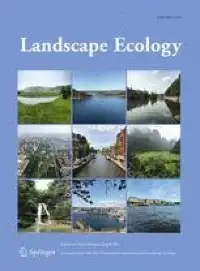
You can contact us to get more choices
Pattern of tree species co-occurrence in an ecotone responds to spatially variable drivers - Landscape Ecology
Context Ecological structure in ecotones, defined by how species
from adjacent systems co-occur, affects ecosystem functions and
climate change responses. Ecotone structure can vary spatially, yet
variability in broader-scale ecotones is poorly understood. In
Wisconsin (USA) the Tension Zone is an ecoregional ecotone,
separating northern and southern ecosystems. Objectives
Characterize ecotone structure in the Tension Zone, examine how
structure varied spatially, and identify how environmental drivers
affected... more Context Ecological structure in ecotones, defined by how species from adjacent systems co-occur, affects ecosystem functions and climate change responses. Ecotone structure can vary spatially, yet variability in broader-scale ecotones is poorly understood. In Wisconsin (USA) the Tension Zone is an ecoregional ecotone, separating northern and southern ecosystems. Objectives Characterize ecotone structure in the Tension Zone, examine how structure varied spatially, and identify how environmental drivers affected structure. Methods Using historical (1800s) tree occurrence data, we examined co-occurrence of northern and southern species at multiple scales (1.0 km to 7.5 km) at different locations in the Tension Zone, identifying the finest scale at which co-occurrence was detected. We assessed relationships between co-occurrence and environmental variables. Results Co-occurrence emerged at different scales, related to interacting climate and soil variables and location within the ecotone. Northern and southern trees co-occurred at broader scales near ecotone center and at locations with higher climatic water availability and sandier soils; they co-occurred at finer scales in locations with higher climatic water availability and richer soils. Sites with xeric tree species were associated with broader-scale co-occurrence. Conclusions We detected spatially variable structure within the Tension Zone, resulting from multi-scale processes among underlying environmental drivers. Finer-scale co-occurrence may have resulted from competition in high-resource environments, while broader scale co-occurrence may have been driven by fire and associated feedbacks. Characterizing structure in an ecoregional ecotone adds to a growing body of evidence that finer-scale factors play a role in defining the characteristics, functions, and responses of broader-scale ecotones. less
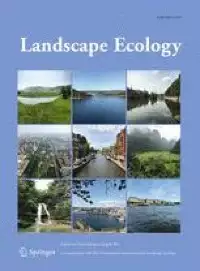
You can contact us to get more choices
Spatial and temporal scales of landscape structure affect the biodiversity-landscape relationship across ecologically distinct species groups - Landscape Ecology
Context The effects of landscape structure on biodiversity may
change with the spatial and temporal scale at which landscape
structure is measured. Identifying the spatial extent and temporal
scale at which the biodiversity-landscape relationship is strongest
(i.e., the scale of effect) is important to better understand the
effect of landscape structure. Objectives The spatial and temporal
scale of effect is analyzed to identify whether it differs in
ecologically distinct species groups. How species
richness-landscape... more Context The effects of landscape structure on biodiversity may change with the spatial and temporal scale at which landscape structure is measured. Identifying the spatial extent and temporal scale at which the biodiversity-landscape relationship is strongest (i.e., the scale of effect) is important to better understand the effect of landscape structure. Objectives The spatial and temporal scale of effect is analyzed to identify whether it differs in ecologically distinct species groups. How species richness-landscape relationship changes with spatial and temporal scales is tested. Methods Based on 98 survey plots (1 km2) of vascular plants on the Swiss Plateau, we analyzed the relationships between species richness of different species groups and landscape predictors at different spatial extents (1 km2, 4 km2, 16 km2, 36 km2) and time periods (past landscapes—1985, 1997, 2009 and the current landscape 2018). Results The spatial scale of effect was 1 km for most species groups, while the temporal scale of effect differed among species groups. The strength of the species richness-landscape relationship generally decreased with increased spatial extents, while it changed little across temporal scales. Conclusions Although our study only considered changes in landscape structure over the last c. 30 years, ecologically distinct species groups revealed differences in the temporal scale of effect including a rapid response of neophytes linked to ongoing biological invasions. However, the variation in the species richness-landscape relationship was greater when changing spatial extent than time. We highlight that studying the relationship between landscape structure and biodiversity should consider not only space but also time, and different responses of ecologically distinct species groups. less
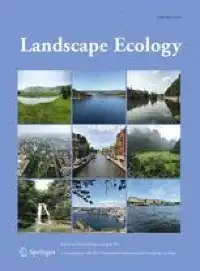
You can contact us to get more choices
Traits influence reptile responses to fire in a fragmented agricultural landscape - Landscape Ecology
Context Habitat loss and fragmentation can interact with other
threats, including altered fire regimes, and responses to these
effects can be mediated by functional traits. Objectives To
determine how richness and abundance of reptile trait groups
respond to habitat fragmentation, patch isolation and fire. Methods
We surveyed reptiles in 30 sites over 3 years. Sites in remnant
patches in farmland were adjacent to a conservation park with
either recently burnt or long-unburnt habitat. The remnant patches
were... more Context Habitat loss and fragmentation can interact with other threats, including altered fire regimes, and responses to these effects can be mediated by functional traits. Objectives To determine how richness and abundance of reptile trait groups respond to habitat fragmentation, patch isolation and fire. Methods We surveyed reptiles in 30 sites over 3 years. Sites in remnant patches in farmland were adjacent to a conservation park with either recently burnt or long-unburnt habitat. The remnant patches were stratified by distance from the reserve. Sites were spatially paired, and we experimentally burnt one of each pair in farmland. Trait groups included size, reproduction, habitat position, diet, and activity period. Results None of the trait groups benefited from experimental burns, while the burns reduced abundance of viviparous, small, and above-ground species. Species richness was lower in isolated sites than in sites close to the conservation park, while generalist trait groups appeared unaffected by patch isolation. Large-sized reptiles had higher abundance in remnants. There was not more rapid colonisation of burnt sites near recently burnt conservation park. Instead, low initial abundance may have been caused by fire in combination with drought, with high rainfall during the study allowing recovery and spill-over into adjacent remnants. Conclusions Landscape structure appears to interact with natural fires, restoration burns and longer-term climatic trends to influence the abundance and distribution of reptiles. Traits mediate responses, enabling us to formulate a set of testable mechanistic hypotheses, which illustrates a pathway to generalisation and prediction. less
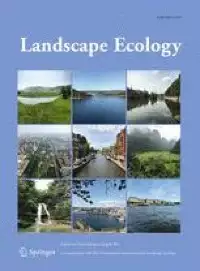
You can contact us to get more choices
Species–genetic diversity correlations through the lens of spatial autocorrelation: insights from high Andean wetlands - Landscape Ecology
Context Understanding species–genetic diversity relationships is
key to foster holistic conservation approaches aimed at preserving
biodiversity across multiple dimensions. Despite the facts that
genetic and species diversity are likely to be spatially structured
and that species–genetic diversity correlations (SGDCs) reveal
coincident spatial patterns between the two diversity levels,
spatial autocorrelation has been largely overlooked. Objectives We
assessed the benefits of investigating species–genetic... more Context Understanding species–genetic diversity relationships is key to foster holistic conservation approaches aimed at preserving biodiversity across multiple dimensions. Despite the facts that genetic and species diversity are likely to be spatially structured and that species–genetic diversity correlations (SGDCs) reveal coincident spatial patterns between the two diversity levels, spatial autocorrelation has been largely overlooked. Objectives We assessed the benefits of investigating species–genetic diversity relationships through a spatial framework using high Andean wetlands from Chile as a case study system. Methods Genetic diversity was estimated using amplified fragment length polymorphism markers for five abundant species and species diversity was assessed as taxonomic richness for two communities (plants and benthic macroinvertebrates). We tested SGDCs using Moran Spectral Randomizations (MSR), and used a causal modelling procedure to elucidate relationships between species and genetic diversity and their coincident spatial structures. Results While traditional correlation tests detected significant SGDCs in most cases (i.e. nine), only three species–genetic relationships reached significance or borderline significance with the MSR approach. In all these cases, genetic and species diversity displayed similar spatial autocorrelation patterns. The causal modelling analyses suggested direct effects of genetic diversity on plant richness for species involved in nutrient cycling. Conclusions Our study provides new perspectives on species–genetic diversity relationships in high Andean wetlands. In addition, it demonstrates the usefulness of causal modelling approaches and the importance of incorporating spatial information to advance understanding of the processes driving both species and genetic diversity, as well as their interactions. less
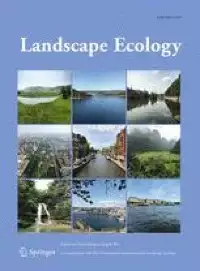
You can contact us to get more choices
Putting more fuel on the fire… or maybe not? A synthesis of spruce beetle and fire interactions in North American subalpine forests - Landscape Ecology
Context Disturbance interactions can create compound, novel effects
across landscapes compared to individual disturbance events.
However, little consensus exists regarding which mechanisms are
important for controlling the interaction of two disturbances with
similar climatic forcings in subalpine spruce–fir forests.
Objectives To investigate the importance of controls on disturbance
interactions, we first outline potential mechanistic links between
spruce beetle outbreaks and fires based on existing research.... more Context Disturbance interactions can create compound, novel effects across landscapes compared to individual disturbance events. However, little consensus exists regarding which mechanisms are important for controlling the interaction of two disturbances with similar climatic forcings in subalpine spruce–fir forests. Objectives To investigate the importance of controls on disturbance interactions, we first outline potential mechanistic links between spruce beetle outbreaks and fires based on existing research. Second, we update the theoretical framework used to understand interactions between spruce beetles and fire in subalpine spruce–fir forests. Third, we provide expectations for potential interactions and suggest avenues for further research. Methods We synthesized existing primary literature to categorize the potential mechanisms controlling the interactions between spruce beetles and fire. Results We categorized mechanisms as either substrate mediated or environmentally mediated. Most research investigating the interaction between spruce beetle outbreaks and fire focuses on substrate mediation. There is a need to expand investigations of environmental mediating mechanisms due to the importance of climate and the ability for either disturbance to alter microclimatic conditions. Conclusions Environmentally mediated mechanisms may better elucidate the interactions between spruce beetles and fire than substrate mediated mechanisms because both disturbances require specific environmental conditions, and both can alter environmental conditions that favor a second disturbance. Our understanding of how these mechanisms promote or constrain interactions is limited and warrants future study. Investigating these topics and expanding the scope of research both spatially and temporally may identify additional patterns that increase the predictability of this important disturbance interaction. less
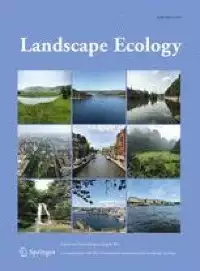
You can contact us to get more choices
Estimating statewide carrying capacity of bobcats (Lynx rufus) using improved maximum clique algorithms - Landscape Ecology
Context Maximum clique analysis (MCA) can approximate landscape
carrying capacity (Nk) for populations of territorial wildlife.
However, MCA has not been widely adopted for wildlife applications,
mainly due to computational constraints and software wildlife
biologists may find difficult to use. Moreover, MCA does not
incorporate uncertainty into estimates of Nk. Objectives We
extended MCA by applying a vertex cover algorithm to compute Nk
over a large (92,789 km2), continuous spatial scale for female
bobcats... more Context Maximum clique analysis (MCA) can approximate landscape carrying capacity (Nk) for populations of territorial wildlife. However, MCA has not been widely adopted for wildlife applications, mainly due to computational constraints and software wildlife biologists may find difficult to use. Moreover, MCA does not incorporate uncertainty into estimates of Nk. Objectives We extended MCA by applying a vertex cover algorithm to compute Nk over a large (92,789 km2), continuous spatial scale for female bobcats (Lynx rufus) in Indiana, USA. We incorporated uncertainty by calculating confidence intervals for Nk across five thresholds of habitat suitability using 10 replicate suitability maps from bootstrapped datasets. For portions of the landscape too large to be solved with the vertex cover algorithm, we compared predictions from a linear model and a “greedy” algorithm. Results Mean estimates of Nk for female bobcats in Indiana across habitat suitability thresholds ranged from 539 (0.75 threshold) to 1200 territories (0.25 threshold). On average, each 12.5 percentile reduction in the suitability threshold increased estimates for Nk by 1.2-fold. Both the predictive and greedy algorithm produced reasonable estimates of maximum cliques for areas that were too large to compute with the vertex cover algorithm. The greedy algorithm produced smaller confidence intervals compared to the predictive approach but underestimated maximum cliques by 1.2%. Conclusions Our research demonstrates effective application of MCA to species occupying large landscapes while accounting for uncertainty. We believe our methods, coupled with availability of annotated scripts developed in R, will make MCA more broadly accessible to wildlife biologists. less
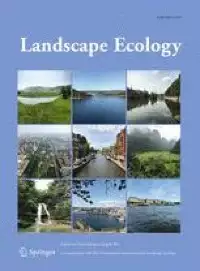
You can contact us to get more choices
virToad: simulating the spatiotemporal population dynamics and management of a global invader - Landscape Ecology
Context The cane toad (Rhinella marina) is one of the most globally
significant and well-studied invasive alien species, and the
detrimental impacts of its invasions warrant the design and
application of decision support tools. While many models have been
developed for guiding policies addressing cane toad invasions, none
reliably predict the species’ population dynamics at scales
relevant to on-the-ground management. Objectives We describe
virToad—an individual-based life-history simulator of the cane
toad.... more Context The cane toad (Rhinella marina) is one of the most globally significant and well-studied invasive alien species, and the detrimental impacts of its invasions warrant the design and application of decision support tools. While many models have been developed for guiding policies addressing cane toad invasions, none reliably predict the species’ population dynamics at scales relevant to on-the-ground management. Objectives We describe virToad—an individual-based life-history simulator of the cane toad. We then illustrate virToad’s ability to forecast the cane toad’s spatiotemporal population dynamics at local- to landscape-scales, and its potential for improving management responses to cane toad invasions. Methods We designed virToad to make population dynamics an emergent consequence of the cane toad’s fitness-maximising behavioural responses to mechanistic constraints (e.g., water availability, kin selection), and to management actions. We used virToad to simulate cane toad population dynamics in the absence of management, and under alternative management strategies implemented across a spectrum of effort: hand-capturing and trapping of juveniles and adults, fencing waterbodies, and trapping and chemically suppressing tadpoles. Results virToad produced plausible predictions of cane toad population densities, detection probabilities, distributions, and spatial segregation. Simulation experiments indicated that the efficacy of competing management actions varied significantly, and that only moderate to high effort hand-capturing and trapping of juveniles and adults had the potential to suppress invasions. Conclusion virToad is an open-source, rigorous, and extensible decision support platform that will enable researchers and practitioners to defensibly forecast local- to landscape-scale cane toad spatiotemporal population dynamics and management outcomes. less
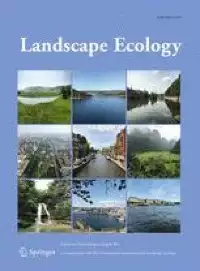
You can contact us to get more choices
A vegetation carbon isoscape for Australia built by combining continental-scale field surveys with remote sensing - Landscape Ecology
Context Maps of C3 and C4 plant abundance and stable carbon isotope
values (δ13C) across terrestrial landscapes are valuable tools in
ecology to investigate species distribution and carbon exchange.
Australia has a predominance of C4-plants, thus monitoring change
in C3:C4 cover and δ13C is essential to national management
priorities. Objectives We applied a novel combination of field
surveys and remote sensing data to create maps of C3 and C4
abundance in Australia, and a vegetation δ13C isoscape for the... more Context Maps of C3 and C4 plant abundance and stable carbon isotope values (δ13C) across terrestrial landscapes are valuable tools in ecology to investigate species distribution and carbon exchange. Australia has a predominance of C4-plants, thus monitoring change in C3:C4 cover and δ13C is essential to national management priorities. Objectives We applied a novel combination of field surveys and remote sensing data to create maps of C3 and C4 abundance in Australia, and a vegetation δ13C isoscape for the continent. Methods We used vegetation and land-use rasters to categorize grid-cells (1 ha) into woody (C3), native herbaceous, and herbaceous cropland (C3 and C4) cover. Field surveys and environmental factors were regressed to predict native C4 herbaceous cover. These layers were combined and a δ13C mixing model was used to calculate site-averaged δ13C values. Results Seasonal rainfall, maximum summer temperature, and soil pH were the best predictors of C4 herbaceous cover. Comparisons between predicted and observed values at field sites indicated our approach reliably predicted generalised C3:C4 abundance. Southern Australia, which has cooler temperatures and winter rainfall, was dominated by C3 vegetation and low δ13C values. C4-dominated areas included northern savannahs and grasslands. Conclusions Our isoscape approach is distinct because it incorporates remote sensing products that calculate cover beneath the canopy, the influence of local factors, and extensive validation, all of which are critical to accurate predictions. Our models can be used to predict C3:C4 abundance under climate change, which is expected to substantially alter current C3:C4 abundance patterns. less
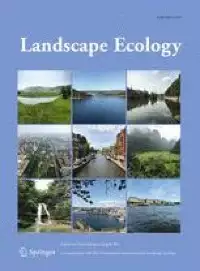
You can contact us to get more choices
Using a trait-based approach to asses fire resistance in forest landscapes of the Inland Northwest, USA - Landscape Ecology
Context Several plant traits are associated with resistance to
fire, thus fire-resistant species may give rise to more
fire-resistant landscapes. However, up-scaling from plant traits to
landscape- and regional-scale fire effects remains a challenge.
Objectives We test two hypotheses: (1) forests composed of
fire-resistant species experience lower fire severity than forests
composed of less fire-resistant species; and (2) wildfires
affecting forests with greater fire resistance experience smaller
patches of... more Context Several plant traits are associated with resistance to fire, thus fire-resistant species may give rise to more fire-resistant landscapes. However, up-scaling from plant traits to landscape- and regional-scale fire effects remains a challenge. Objectives We test two hypotheses: (1) forests composed of fire-resistant species experience lower fire severity than forests composed of less fire-resistant species; and (2) wildfires affecting forests with greater fire resistance experience smaller patches of high-severity fire. Methods We used a predictive map of existing forest types (major tree species dominating forest composition) and a trait-based map of fire resistance. We examined large-scale spatial patterns of fire severity derived from Landsat imagery in 611 wildfires across the range of western larch in the Inland Northwest USA (1985–2014). We then applied structural equation modeling to study complex relationships between fire resistance and high-severity fire in each wildfire. Results Forest types dominated by fire-resister species (e.g., ponderosa pine) experienced lower fire severity than forest types dominated by non-resister species such as lodgepole pine (fire-embracer) and subalpine fir (fire-avoider). We found a strong negative correlation between the fire resistance index and average values of the relative differenced normalized burn ratio, as well as an indirect relationship between fire resistance and high-severity patch size. Conclusions The large-scale differences in fire severity among forest types generally reflect the degree of fire resistance that fire-related traits confer to individual trees species, providing evidence that incorporating plant traits has the potential to assist in assessing fire resistance at large spatial scales. less
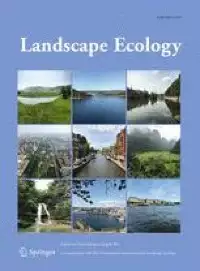
You can contact us to get more choices
Evaluating the supply and demand of cultural ecosystem services in the Tibetan Plateau of China - Landscape Ecology
Context In the Tibetan Plateau (TP), the supply of cultural
ecosystem services (CESs) is unique, and the demand for CESs is
gradually increasing with rapid urbanization. Evaluating the
relationship between the supply and demand for CESs is critical for
guiding regional sustainable development. However, due to the
difficulty in obtaining empirical data in the high altitude and
complex topography of the TP, relevant research is still lacking.
Objectives The objective of this study was to develop an approach
to... more Context In the Tibetan Plateau (TP), the supply of cultural ecosystem services (CESs) is unique, and the demand for CESs is gradually increasing with rapid urbanization. Evaluating the relationship between the supply and demand for CESs is critical for guiding regional sustainable development. However, due to the difficulty in obtaining empirical data in the high altitude and complex topography of the TP, relevant research is still lacking. Objectives The objective of this study was to develop an approach to address the difficulty of obtaining the empirical data on the TP and to evaluate the relationship between the supply and demand for CESs. Methods Taking the Qinghaihu–Huangshui basin as an example, we combined the SolVES (Social Values for Ecosystem Services) model and social media big data to evaluate the supply and demand for CESs in the TP. Results Our results showed that the combined method can effectively evaluate the supply and demand for CESs in the basin, and can be used for other remote regions. The supply and demand for CESs in the basin exhibited obvious spatial mismatch. Among the two types of mismatch, in the areas of high supply and low demand of CESs, residents’ subjective well-being (SWB) were substantially lower. Being far away from central city was an important reason for the high supply and low demand of CESs. Conclusions Establishing and improving the transportation system connecting central cities with other counties is encouraged to utilize the rich cultural and tourism resources of the TP, as well as enhance the SWB and promote regional sustainable development. less
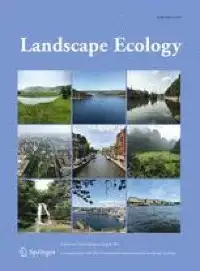
You can contact us to get more choices
Spatially explicit models predict coffee rust spread in fragmented landscapes - Landscape Ecology
Context Landscape structure influences the spread of plant
pathogens, including coffee leaf rust, a fungal disease affecting
the coffee industry. Rust transmission is likely affected by
landscape structure through the dispersal of wind-borne spores.
Previous studies found positive associations between rust incidence
and the proportion of pasture cover, suggesting deforestation may
facilitate spore dispersal. Objectives We explored the links
between landscape structure and coffee rust by modeling the spread
of... more Context Landscape structure influences the spread of plant pathogens, including coffee leaf rust, a fungal disease affecting the coffee industry. Rust transmission is likely affected by landscape structure through the dispersal of wind-borne spores. Previous studies found positive associations between rust incidence and the proportion of pasture cover, suggesting deforestation may facilitate spore dispersal. Objectives We explored the links between landscape structure and coffee rust by modeling the spread of rust transmission. We investigated how (1) spatial clustering of coffee farms, (2) proportion of landscape deforestation, and (3) clustering of deforestation affects the speed of rust transmission. Methods We developed a probabilistic model to simulate within-patch and between-patch transmission in simulated and real landscapes. We modeled within-patch transmission using a probabilistic cellular automata model and between-patch transmission using a random walk with spore movement inhibited by canopy cover. Results Clustering of coffee farms is the primary driver of rust transmission. Deforestation is a secondary driver of rust spread: outbreaks spread more rapidly in landscapes where deforested areas are evenly dispersed throughout the landscape. When applied to real landscapes in Costa Rica, the model yields the same trends as simulated landscapes and suggests increased amounts of coffee near the starting location of the outbreak are correlated with more rapid rust spread. Conclusions It is essential to consider landscape structure when managing the spread of crop diseases. Increasing the spacing between coffee farms and reducing forest fragmentation in coffee-growing regions can benefit biodiversity conservation and reduce the economic impacts of coffee rust. less
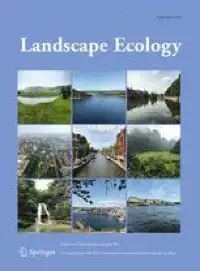
You can contact us to get more choices